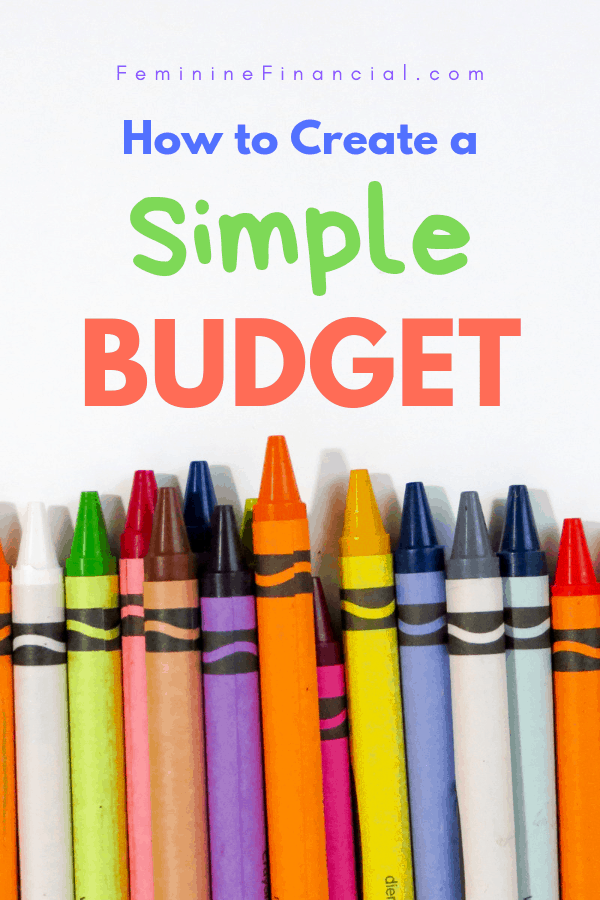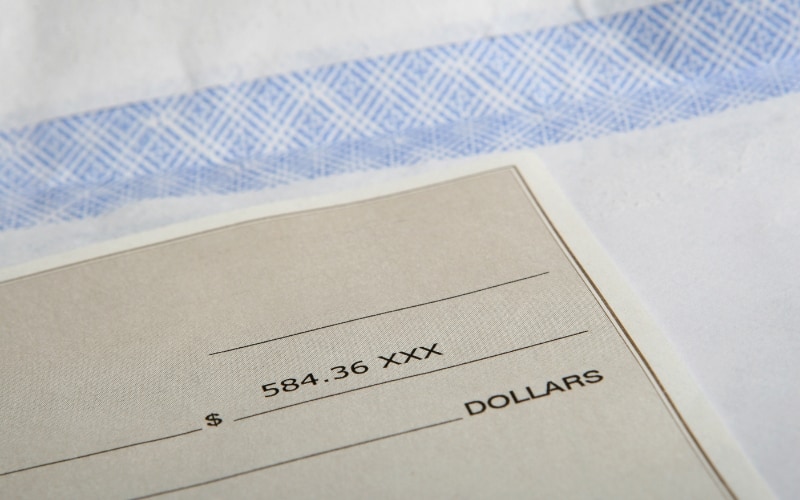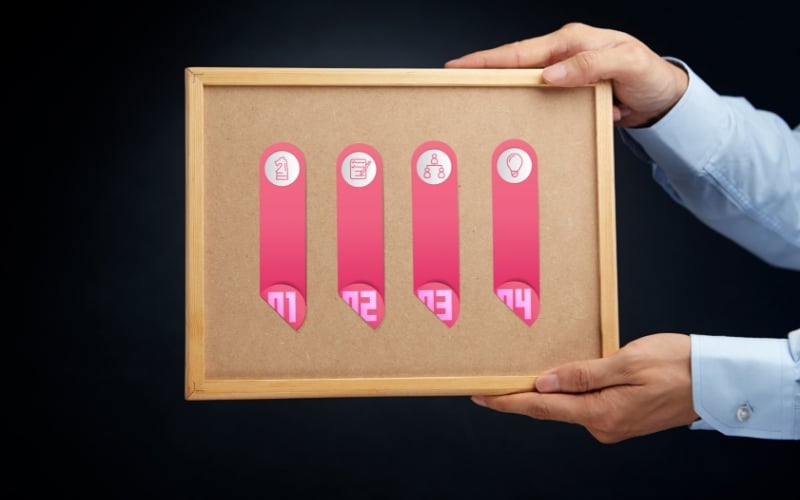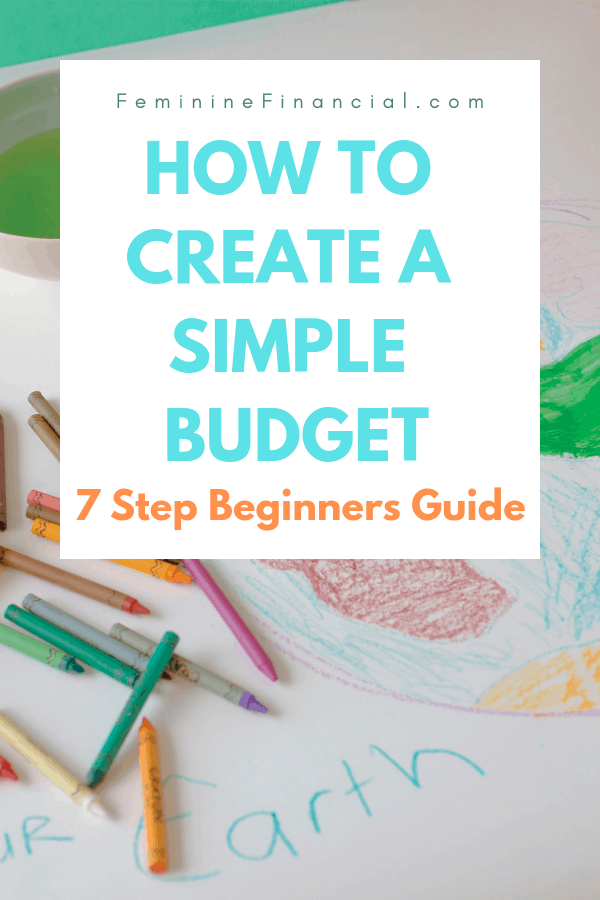Congratulations! You’ve made the decision to get your finances in order. Because you’re here you know that creating a budget is a necessary step in managing your finances.
Budgeting doesn’t have to be complicated or time consuming. Like most things you might find maintaining your budget cumbersome in the beginning.
However, if you create a simple budget and use the right tools, you’ll find that being financially fierce is a breeze.
Note: This page contains affiliate links, which means that if you buy something using one of the links below, I may earn a commission.

Why You Need a Budget
I won’t spend a lot of time telling you why you need a budget. The very fact that you are reading this article demonstrates that you have this covered.
I will say that once you create a budget and put it into action, you will notice big changes in your finances. You will know exactly where your money is going and have a clear path to reaching financial goals.
Any debt you have will quickly become a thing of the past because you will actively remove it. You will also be less likely to accumulate more debt.

How to Create a Budget
It’s time to dive into the actual steps you will need to take to create your budget. But before you begin you will need to determine how you will track and maintain your budget.
There are many options when it comes to maintaining your budget. Some people enjoy good old pen and paper. While others prefer spreadsheets, or apps.
Here are a few options to get you started:

Step 1: Calculate Your Monthly After-Tax Income
The first step in creating your simple budget is to calculate your monthly after-tax income. This should include what you bring home from your job after taxes have been taken out.
You monthly income should also include any additional income that you receive. This includes money from side jobs, gifts, child support, or any source that provides you money.
In some cases your income might vary. This might be true if you work on commission or if you are a freelancer. If this is your situation, take a look at what you made in the last 3 months to get an idea of your income.
Using your method of choice, write down or enter your monthly after-tax income.

Step 2: Determine Your Fixed Monthly Expenses
In step 2 you need to determine your fixed monthly expenses. These are items that you must pay every month in order to live.
For most of us, these are things like rent/mortgage, car note, utilities, and insurance. Your debts should also be included in your monthly expenses. Student loans, credit card payments, or any type of loan payments qualify as fixed monthly expenses.
Do not include things like your subscription to Shoe Dazzle or gym membership here. Although you might pay for these services monthly, they are not required for you to live. They are apart of your disposable expenses and we will account for them later.
Using the method of your choice list out all of your fixed monthly expenses. It is important that you are as detailed as possible in this step.
Once you have listed out all of your expenses, get a total of your fixed monthly expenses.

Step 3: Establish Your Financial Goals
At this point we have documented the items in your finances that are somewhat static. Although you income can change by you getting another job or taking on a part time job. For the most part your income is your income.
The same is true for you fixed monthly expenses. You can change your living expenses by moving to a cheaper apartment but no matter what you will have living expenses. They will always be apart of your budget although the amounts can change.
In step 3 you need to take a moment and establish your financial goals. These goals will determine how you spend any money you have left after your fixed monthly bills.
You financial goals should include anything you want to achieve financially. This could be both long term and short term goals. Some sample financial goals could include:
- Creating a $1000 Emergency Fund
- Paying off all Debt
- Buying a House
- Taking a Bucket List Trip
Setting your financial goals will allow you to come up with a plan for saving money. You will know exactly how much you need to save and if you are bringing in enough income to reach those goals.
Write down your financial goals and determine how much money you will need to contribute to them monthly to meet your needs. Add these items to your list of fixed monthly expenses.

Step 4: Add in Discretionary Expenses
In step 4 it’s time to add in discretionary expenses. These are any expenses you have that fall in the “want” category.
When figuring out your discretionary expenses consider things like nail and hair salon visits, Netflix, or eating out.
It is important to note that discretionary expenses are expenses that are secondary to your monthly fixed expenses and your financial goals. They are things that you can indulge in “only if” you have the funds available after taking care of more important items.
Discretionary expenses are also the first adjustments that you make to your budget if you determine that you are spending too much money each month.
List out all of your discretionary expenses and add them up for a total.

Step 5: Subtract Total Expenses from Monthly After-Tax Income
Now that you know your total income and total expenses it is time to do some math. In step 5 you are going to subtract your expenses from your income.
Be sure that you have added up your Monthly Fixed Expenses and your Discretionary Expenses to get your Total Expenses before you do this calculation.
If your results from this calculation is a positive number then you have good results. This means that you are making more money then you are spending.
However, if your results from this calculation is a negative number then you’ve got work to do. This means that you are spending more money than you make. It’s time to see where you might be wasting money.
At this point, it is time to reduce or remove some of your discretionary expenses. Continue to remove discretionary expenses until you get to a positive number when you subtract your expenses from your income.
If you are still at a negative number after eliminating discretionary expenses you will need to make changes to your financial goals. This is a good indicator that you need to look for ways to make extra income.

Step 6: Execute Your Budget
Now that you know where you stand it’s time to execute your budget. This means actually living and sticking to spending the way you are planned to according to your well thought out but simple budget.
In step 6 you want to live your budget. This will help you determine how well you planned.

Step 7: Make Adjustments
In step 7 you want to make any necessary changes. Did you notice a new expense that you didn’t account for? Has any of your fixed expenses changed?
Monitoring your budget and making adjustments is key to being successful at sticking to your budget and reaching your financial goals.
Leave a comment and share your budgeting method.

Don’t forget to Like, Share, Tweet, and Pin this post.

